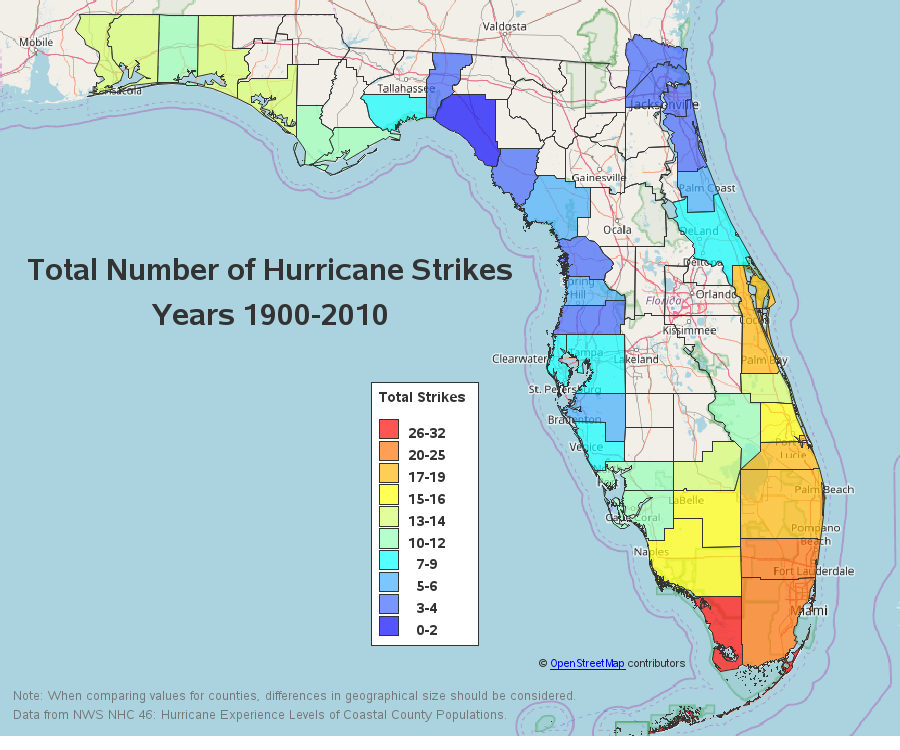Hurricane Risk Map Florida
The topic of hurricane analytics has been increasingly important in recent years, especially with the recent devastation caused by Hurricane Harvey in Texas, Hurricane Maria in Puerto Rico, and Hurricane Irma in Florida. One image that has been circulating online is a chart showing the historical frequency of hurricanes in Florida. As you can see from the image, Florida has been hit by a significant number of hurricanes over the past century, including some of the most devastating in recent history – Hurricane Andrew in 1992 and Hurricane Wilma in 2005. With Hurricane Irma recently barreling through the state, causing massive damage and leaving many without power and water, the importance of hurricane analytics cannot be overstated. So what exactly is hurricane analytics? It is the use of data analysis tools and techniques to understand and predict the behavior of hurricanes, including their intensity, path, and impact. The goal is to provide accurate and timely information to policymakers and the public in order to better prepare for and respond to these natural disasters. One way hurricanes are analyzed is through computer modeling. These models use data from satellite imagery, air pressure readings, and wind speeds to create a visualization of the storm's path and potential impact. The models can also simulate various scenarios, such as a hurricane's path changing due to wind speed or direction. Another important aspect of hurricane analytics is the use of data from past storms. By studying the behavior of previous hurricanes, researchers can develop more accurate models for predicting future storms. This includes looking at factors like wind patterns, ocean temperatures, and air pressure systems. However, as Hurricane Irma showed, predicting the behavior of a hurricane is still a complex and challenging task. Despite advances in computer modeling and data analysis, there is still significant uncertainty around a hurricane's path and intensity. This is due to the many variables that can affect a storm's behavior, such as changes in wind speed or direction, or unexpected weather patterns. Despite these challenges, there are many professionals working to improve our understanding of hurricanes and increase our ability to predict and respond to them. These include meteorologists, climatologists, computer scientists, and government officials. Through continued research and data analysis, we can better prepare for and respond to these natural disasters and minimize their impact on our communities. In conclusion, hurricane analytics is a critical field that is becoming increasingly important in our changing climate. By using data analysis tools and techniques, researchers can gain a deeper understanding of hurricanes and provide more accurate and timely information to the public. While predicting the behavior of these natural disasters remains a significant challenge, continued research and innovation can help us better prepare for and respond to these storms in the future. Image source: http://robslink.com/SAS/democd57/florida_hurricanes.png 

blogs.sas.com

blogs.sas.com
Post a Comment for "Hurricane Risk Map Florida"